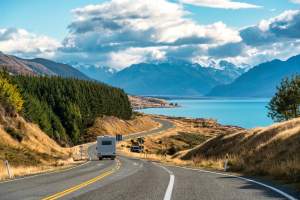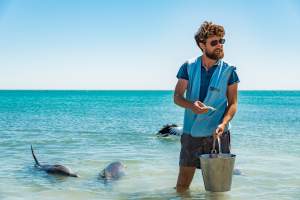
The Arctic isn’t a single destination. It’s a realm — cold, vast, and raw in ways that feel completely detached from the rest of the world. Whether it’s the mirror-flat ice fields of Greenland, the remote fjords of Svalbard, or the tundra of northern Canada, the Arctic commands a different kind of travel mindset: slower, humbler, and more in tune with extremes.
But how you explore it matters — a lot.
Unlike more traditional destinations, the Arctic doesn’t offer a one-size-fits-all itinerary. Your experience will be shaped by how you choose to move through the environment. And the three main ways travelers reach into the Arctic — cruise, trek, or train — couldn’t be more different. Each has its strengths, its challenges, and its ideal traveler.
So if you’re dreaming of heading north, here’s what you need to know to choose the right path for your own Arctic adventure.
Option 1: Cruising the Arctic Waters
If the idea of drifting through icy channels, waking up to whales outside your window, and stepping onto uninhabited shores appeals to you, an Arctic cruise is the way in.
Modern Arctic cruises range from rugged expedition ships to ultra-luxe floating hotels, but most share a few constants: Zodiac landings, onboard naturalists, and an itinerary that changes depending on weather and wildlife movement.
Best Routes:
- Svalbard (Norway): Excellent for polar bears, walrus colonies, and surreal ice scenery.
- Greenland’s East Coast: Remote fjords, glaciers, and colorful Inuit settlements.
- Northwest Passage (Canada): A historic route with deep cultural layers and challenging navigation.
- Franz Josef Land (Russia): For those with a taste for remote and rarely visited territory.
Pros:
- Unmatched access to remote coastlines and otherwise unreachable islands.
- Wildlife encounters are frequent — think polar bears, seals, whales, and Arctic foxes.
- Comfort and safety, even in extreme environments, with heated cabins and experienced guides.
- No trailblazing required — just show up, and the Arctic comes to you.
Cons:
- Expensive. Even budget cruises aren’t cheap — expect to pay for access.
- Limited land time. You’ll visit many places, but only for short windows.
- Environmental concerns. Large ships in fragile ecosystems raise questions about impact — opt for small ships with sustainable practices.
Best for: Photographers, wildlife lovers, and those who want to see as much as possible with physical ease.
Option 2: Trekking the Arctic Tundra
There’s a romance to walking — slowly, deliberately — across the Arctic. Trekking gets you closer to the textures of the north: the crunch of frozen ground, the rustle of reindeer herds, the silence that expands in the absence of trees.
But it’s also not for the unprepared. Trekking in the Arctic is a test of resilience, awareness, and humility. It rewards the committed and punishes the reckless.
Top Trekking Regions:
- Greenland’s Arctic Circle Trail: Roughly 100 miles from Kangerlussuaq to Sisimiut — no roads, no people, just wilderness.
- Sweden’s Kungsleden Trail (north section): Crosses Arctic Lapland with hut-to-hut convenience.
- Iceland’s Hornstrandir Nature Reserve: Wild and uninhabited, it feels like the edge of the Earth.
- Alaska’s Brooks Range: Remote, unpredictable, and hauntingly beautiful.
Pros:
- Deep immersion. You’re not watching the Arctic — you’re in it.
- Solitude and stillness. Few places offer such raw quiet.
- Physical connection. Every step reminds you of the land’s scale and power.
- Wild camping. Waking up under the midnight sun (or aurora) is unforgettable.
Cons:
- Requires preparation. Cold, gear, maps, navigation — this isn’t a casual stroll.
- Physical demands. Snow, rivers, wet tundra — expect to get uncomfortable.
- Wildlife is more elusive. Unless you’re incredibly lucky, don’t expect a polar bear crossing your path.
Best for: Hardcore adventurers, solitude seekers, experienced hikers looking for pure wilderness.
Option 3: Riding the Arctic Rails
There aren’t many train lines that touch the Arctic Circle, but the ones that do offer an elegant and surprisingly immersive alternative to traditional travel. You get the views, the seasonal drama, and local life — all without the physical strain or cruise-ship structure.
Trains may not get you to the most remote corners, but they offer a deeply atmospheric ride through Arctic-adjacent regions, and they’re ideal for travelers who want comfort without compromising on scenery.
Most Scenic Arctic Rail Routes:
- Norway’s Nordland Line: Runs from Trondheim to Bodø, crossing the Arctic Circle.
- Sweden’s Iron Ore Line (Kiruna to Narvik): Through Arctic Lapland, especially magical in winter.
- Finland’s Santa Claus Express: Helsinki to Rovaniemi — cheesy in name, stunning in landscape.
- Russia’s Murmansk Railway: Links Saint Petersburg to Russia’s Arctic coast — stark, moody, and historically loaded.
Pros:
- Comfortable and slow. A great option for reflective travelers who want to absorb without exertion.
- Seasonal variety. Trains run year-round, so you can catch northern lights in winter or midnight sun in summer.
- Local interaction. You’re more likely to share space with Arctic residents than tourists.
- Affordability. Trains are typically cheaper than cruises or guided treks.
Cons:
- Limited access. Trains don’t reach the wildest parts of the Arctic.
- No off-the-beaten-path detours. You see it, but you don’t touch it.
- Less wildlife. Views are often stunning but not rich in big animal sightings.
Best for: Scenic travelers, writers, romantic realists, and those who want to feel the rhythm of the north without hiking boots or ship decks.
Which Is Right for You?
| Travel Style | Cruise | Trek | Train |
|---|---|---|---|
| Physical Effort | Low | High | Very Low |
| Wildlife Viewing | Excellent | Limited | Minimal |
| Scenery Access | Expansive (via coastlines) | Intimate (on foot) | Broad (through windows) |
| Cost | High | Medium | Low to Medium |
| Cultural Immersion | Moderate (guided) | Low (mostly solo) | Moderate to High (local routes) |
| Comfort Level | High | Low to Moderate | Moderate |
Bonus: What About Going by Snowmobile or Dog Sled?
There’s a fourth category that’s worth mentioning — expedition-style travel using snowmobiles or dog sleds. It’s not for the faint of heart (or the cold-averse), but it offers the most visceral Arctic experience.
Dog sledding across Svalbard or Finland can feel like stepping into another era. Snowmobile expeditions through Iceland or northern Norway put you in motion — fast — but still exposed to the elements.
Best approached with experienced guides and a healthy respect for ice, weather, and isolation.
When to Go
- Late spring to early summer (May–July): Long daylight, accessible terrain, best cruise conditions.
- Late summer (August–early September): Good for treks and avoiding bugs; some cruises still run.
- Winter (December–March): Arctic in full frost mode — best for northern lights, dog sledding, snowmobile trips, and train rides through snowy vistas.
The Arctic doesn’t bend to your itinerary — it demands that you meet it on its terms. Whether you float, walk, or ride your way through it, you’re not just visiting a destination. You’re entering a different tempo, one where silence is powerful and scale is humbling.
Cruise if you want wildlife and sweeping access. Trek if you want full sensory immersion. Take the train if you want to watch the north pass by like a slow, haunting film.
Whatever you choose, one thing’s certain: the Arctic doesn’t do half-measures — and it doesn’t leave you the same.







